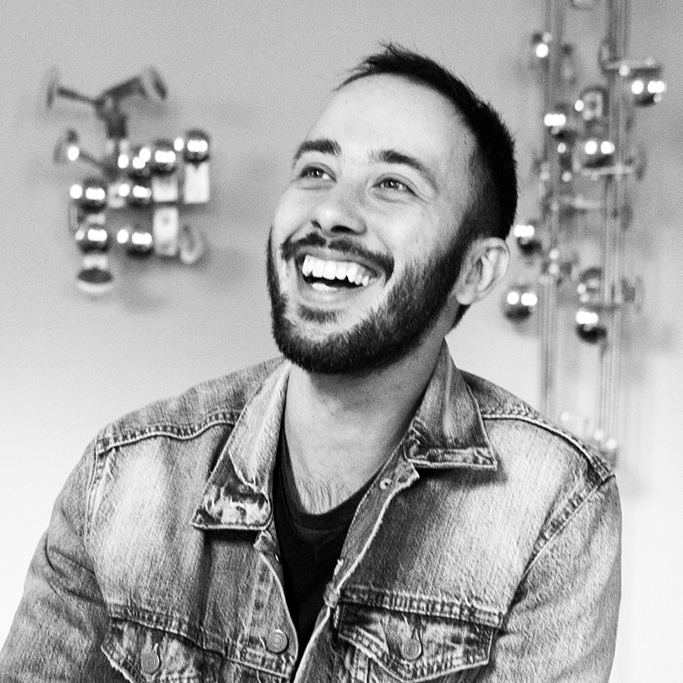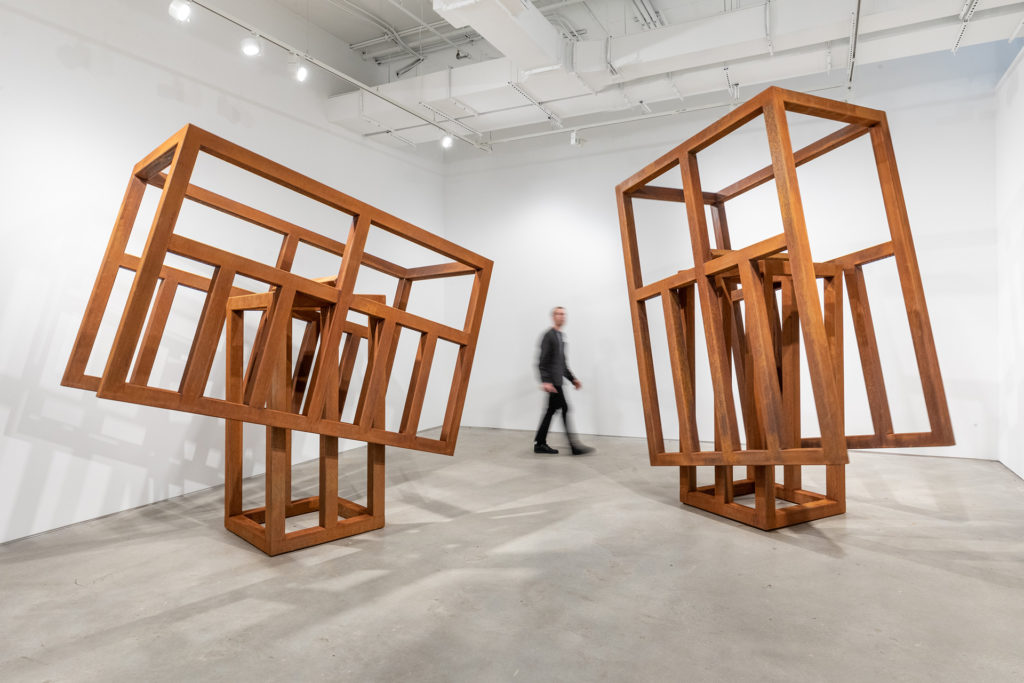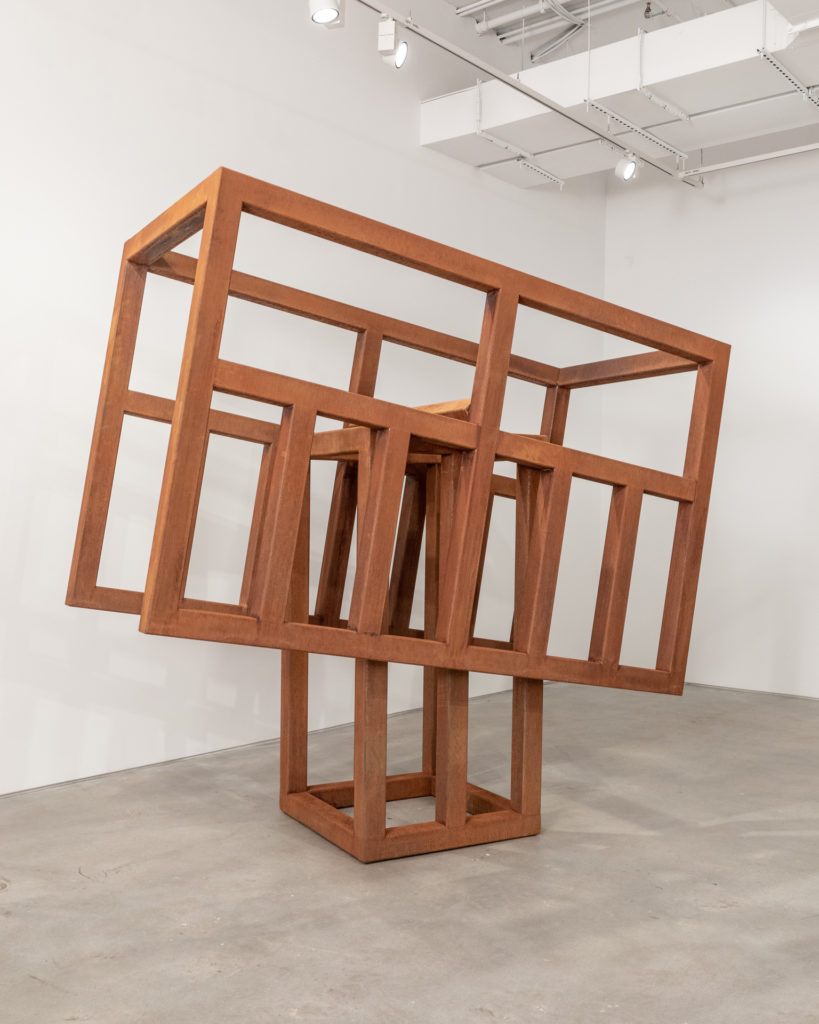The artist Gustavo Prado wrote an original essay about Empty Head, the first solo show by Raul Mourão at the New York branch of the Nara Roesler Gallery. The show brought together the video Bang Bang (2017), the series of sculptures Bottles and Glasses, and works from the series The New Brazilian Flag (2019), together with the recent sculptures from the series Rebel (2021). These recent works synthesize and connect two important aspects of the artist’s production: his formal approach and a political discourse engaged with the present. In his text, Gustavo Prado uses these works to reflect more broadly on Raul Mourão’s production, including quotations from works by artists and authors, such as the iconic Bicycle Wheel (1913) by Marcel Duchamp, and País inventado (1975) by Antonio Dias, as well as the novel O jogo da amarelinha, published in 1963 by Julio Cortázar.
If you ask me what my country is
by Gustavo Prado
Waiting game
It was from Marcel Duchamp’s “empty head” that the checkmate which launched kinetic art and the subsequent, paradigmatic series of ready-mades emerged. With Bicycle Wheel (1913) — consisting of a bicycle wheel fixed to the top of a kitchen bench — he demonstrated that, in art as in chess, it is not just hands that put the pieces in motion, but also ideas.
In Raul Mourão’s Empty Head, his first exhibition in the new space of the Nara Roesler gallery in New York, four groups of works dedicated to different aspects of the experience of movement can be found. The works presented oscillate between the accessibility that is proper to everyday objects and the challenge of altering them in conjunction with the viewer, to reveal, from within that familiarity, the new that was previously dormant.
In an audio recording on the page dedicated to the Bicycle Wheel on the MoMA website — where a second version of it is displayed —, Duchamp speaks of his joy at finishing the sculpture and making the wheel spin, moving a useless wheel, which opened so many paths. In a podcast A Piece of Work, the comedian Abbi Jacobson talks about the strong desire to touch it, and the frustration of not being able to, and to thus imitate the author’s celebratory gesture. In the museum you can’t touch the works, and the sculpture’s wheel no longer turns. Nevertheless, we could say that it continues to move.
I reiterate: even if Calder’s Mobiles hardly move, and Lygia Clark’s Bichos scarcely bend, or Oiticica’s Parangolés never dance, and Palatnik’s Kinetic Objects rarely activate; nonetheless, all these works remain in motion. And even those who have never witnessed Augusto Boal’s Theatre of the Oppressed, or enjoyed the food of Tiravanija, intersecting in Kassel with the immigrants of Wei-Wei’s Fairytale, or moved mountains with Alÿs in the dunes of Peru... Even those who have not experienced one or other form of participation, when we discover, through texts or records, the ideas that make them memorable works: we continue to set them in motion.
Empty Head embodies the relationship of interdependence on which every work of art depends. In the encounter not just with the body that is willing to touch the work that allows themselves to be touched, but also with the attention of those willing to share and activate the ideas offered up by them. Ideas capable of setting in motion other possible spaces, beyond inertia, with associations as unexpected as they are transformative. Indeed, without this kind of encounter (far from the eyes) with their audience, these objects remain devoid of meaning, lonely and imprisoned, in a holding pattern.

Gustavo Prado
Gustavo Prado is an artist, designer and researcher. Lives and works between Brooklyn and Philadelphia. His Arts studies started at Escola de Artes Visuais do Parque Lage, in Rio de Janeiro. Wielding sculpture, performance, photography and video as his tools, Prado develops alterations of perspective in order to achieve artworks that investigate the inherent complexities behind the act of seeing and analyze notions that are simultaneously intrinsic and odd to the field of art, such as vigilance, appropriation, voyeurism and religion. His works have been featured in exhibitions and venues such as Coachella Festival and the 4th Bronx Museum Biennial, both in 2017, and are a part of Rio de Janeiro's Museum of Modern Art and Casa Firjan's collections.

















